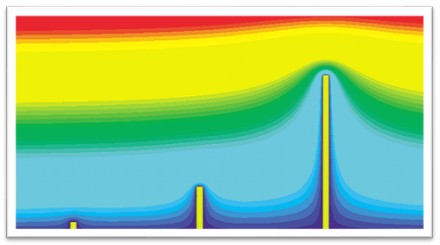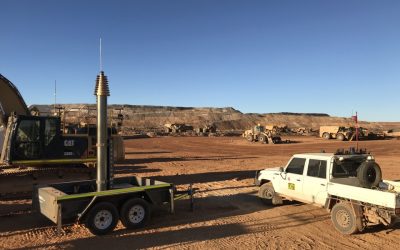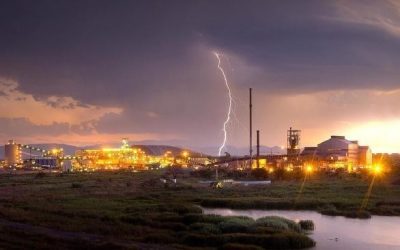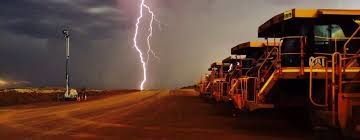Overnight there have been reports that 14 teenage soccer players had been injured by a lightning strike to an area lighting column at a sports ground in Switzerland.
To those not well versed in the finer detail of a soccer match, at eleven (11) players a side, fourteen (14) injuries represents well over half of the total player contingent, who were all injured as a result of a single lightning strike to an area lighting column located on the perimeter of the playing field.
My experience as a normal person, having undertaken normal family activities of several years of regularly taking my children to their weekly football, soccer, tennis, and athletic events, has put me me up close and personal with many area lighting columns that are abundant across many local govt owned sporting facilities and public open spaces.
And as a ‘Lightningman’, I am constantly aware of my surroundings with regards to the application of controls that would effectively deal with risks posed by lightning risk, hence I tend to be aware of things such as lightning rods, catenary shields, earthing pits, and earthing electrode bonds on area lighting columns, where the vast majority of lighting columns that I had ever seen, have not been locally grounded by any dedicated earthing electrode.
Having dealt with many electrical construction organizations dealing with similar area lighting projects, what I understand is far more common, is the reliance upon cabled running earth wires that terminate back to a low resistance earth bar which is located within some upstream power distribution board.
Whilst the use of of running cabled earths may be suitable for normal 50/60 hz mains fault current safety requirements, and which meets the governing SAA wiring rules, from a lightning sense the inherent lead inductance on any long length running earthing conductors will present as a high impedance to the high rise times (dI/dT) of lightning currents that may ever attach to such area lighting columns.
This high lead inductance component is simply not suitable for dealing with higher current, higher frequency, and higher dI/dT transient over-voltages that are typical of lightning, and especially wherever longer cabling distances are involved.
Whilst this article is pointed towards public sporting facilities, it will also be relevant to commercial and industrial facilities, remote area operations, remote village accommodations, carparks, bus stops, correctional, and defence facilities, where we have found the standard practice for grounding such tall higher risk features, is typically via the running cabled earth, and without any provision for dedicated local grounding electrodes.
So why is it that designers and installers of area lighting columns, still persist with the reliance upon upstream earth terminations via running cabled earth wires, and is there any consideration ever given to lightning attachment to these lighting columns?
From a lightning perspective, any tall tapered lighting column will act to converge the intensifying local electric field that is present during localized thunderstorms, and hence any tall object will have a higher disposition for lightning attachment than any lower object, or surrounding flat surfaces.
In the microseconds leading up to a lightning strike, all ground points that are subject to local E Field intensification will be sending up streamer leaders that are semi thermalized filaments of current that are launched upwards, and which will be competing with each other to be the successful streamer that captures the approaching downward lightning leader.
The following Youtube video demonstrates this phenomenom.
https://www.youtube.com/watch?v=P8vqm_ABfqg&feature=emb_title
Courtesy: Storm Highway.com
A lightning rod works by its ability to converge the invisible and intensifying electric field to the point that these streamer leaders are developed more efficiently than areas of lower intensification, which are then launched upwards on the close approach of a lightning down leader. In general the higher the object, the higher the intensification.
Whether a lighting column is fitted with a lightning rod or not, the tall and tapered nature of lighting columns, makes them a higher probability target for lightning attachment, than any nearby surrounding ground surface, or object of lower field intensification.
It is my belief that any tall lighting columns, that are located around sporting grounds, public car parks, or wherever installed in any close proximity to areas where persons are likely to traffic or congregate, should require dedicated earthing electrode to be located at the base of the footing, which should then be equipotential bonded to the running earth, that is then referenced to the earth bar within the supplying upstream distribution board.
This issue that will similarly affect tall tapered goal posts that are commonplace on thousands of sporting grounds throughout Australia, and internationally.
In regards the recent aforementioned incident, it had been reported that lightning had struck a lighting column where ground currents then travelled across a wide area of the playing surface, which is consistent with the earth potential rise (EPR) risk mechanism, which statistics tell us accounts for over 50 % of all lightning injuries.

In 2016, a lightning strike in a Norwegian national park resulted in 323 reindeer being killed, which similarly points to this EPR risk mechanism, which uncontrolled can obviously electrify such a large area as would host 323 large beasts.
Some Lightning 101.
It is a common myth that lightning always follows the path of least resistance “R”, and whilst this is true to some extent with normal 50/60 Hz mains current, lightning current has a much higher and wider frequency bandwidth, and will actually follow the path of least impedance “Z”.
Without getting too technical, Impedance (Z) is very different from Resistance (R), where Z involves a complex relationship between Voltage ( V), Phase angles, Resistance (R) and Inductance (L).
Where;
- Resistance is the steady current, or DC component.
- Inductance is the time varying current component.
- Resistance is a property of the material.
- Inductance is a property of the shape of the material.
For lightning applications, the reduction of inductance ( L) is the most important component.
With running cabled earths, you may have a low resistance, but this may still present a high impedance due to the lead inductance component that will be presented, especially over longer distances.
Technically, and from a lightning perspective, this is a no brainer!
The formation of lightning leaders being launched from tall tapered objects does not appear to be widely understood, and appears to be beyond the understanding of those designers who persist in the omission of ground rods, that would offer greater public safety during localized thunderstorms.
This lack of public safety oversight to this issue is confounding!
Grant Kirkby- Lightningman




